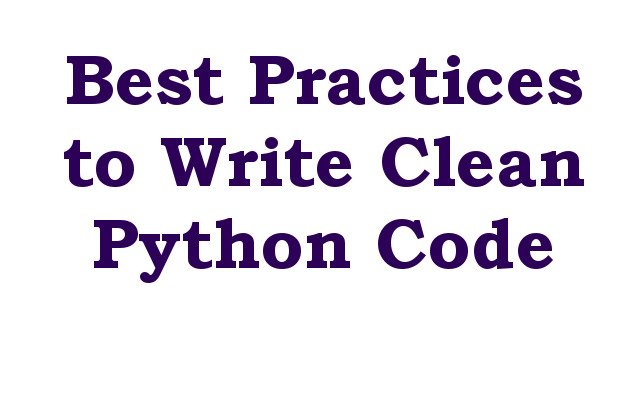In this lesson we want to talk about Best Practices to Write Clean Python Code.
What is Clean Code ?
Clean code is term used to describe code that is well written, readable and maintainable. clean code follows set of best practices and coding standards that make it easier to understand, modify and extend. some characteristics of clean code includes:
- Readability: Clean code is easy to read and understand. it uses descriptive and meaningful variable and function names and has consistent and logical structure.
- Maintainability: Clean code is easy to modify and maintain. It is well organized, modular and avoids complex or unnecessary code.
- Reusability: Clean code is designed to be reusable. it is organized into functions and classes that can be used in multiple places and it makes code maintenance easier and reducing the amount of code that needs to be written.
- Testability: Clean code is easy to test. it is written in way that makes it easy to write tests for, and has tests written for it to ensure that it is working correctly.
- Scalability: Clean code is designed to be scalable. It is written in way that makes it easy to add new features and capabilities as the needs of the application change.
Clean code is an important concept in software development because it makes it easier to maintain and extend code over time. writing clean code can take more time upfront, but it pays off in the long run by making code easier to maintain and reducing the time and effort required for bug fixing and adding new features.
Best Practices to Write Clean Python Code
These are some best practices for writing clean and maintainable Python code:
- Use PEP 8: PEP 8 is the official style guide for Python and it outlines guidelines for writing consistent and readable code. following PEP 8 will help you write code that is easier to understand and maintain.
- Use meaningful variable and function names: Choosing descriptive and meaningful names for your variables and functions will make your code more readable and easier to understand.
- Write comments: Comments are great way to document your code and explain what it does. writing comments will make it easier for others to understand your code and for you to remember how it works in the future.
- Avoid unnecessary code: Keep your code concise and avoid writing unnecessary lines of code. this will make your code easier to read and maintain.
- Use functions and classes: Organizing your code into functions and classes will make it easier to understand and maintain. functions and classes also allow for code reuse which will make your code more efficient.
- Use docstrings: Docstrings are strings that describe what function or class does. writing docstrings will make your code more self documented and easier to understand.
- Use exceptions for error handling: Python provides built in exception handling, which you should use to handle errors in your code. this will make your code more robust and easier to maintain.
- Test your code: Writing tests for your code will help you catch bugs early and ensure that your code is working as expected.
- Use a linter: linter is tool that checks your code for potential problems and helps you enforce good coding practices. Using a linter will help you write cleaner and more maintainable code.
In result we can say that following these best practices will help you write clean and maintainable Python code. Writing clean code will make it easier for you and others to understand and maintain your code, and will help you create efficient, scalable and robust applications.
